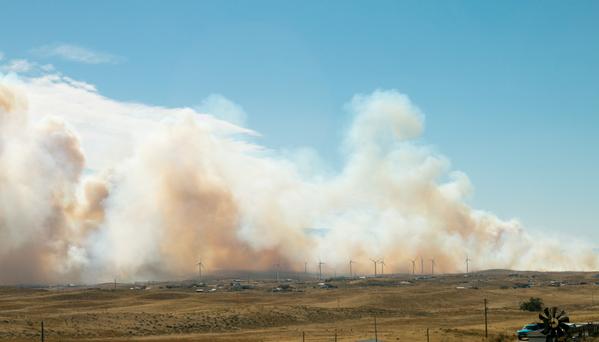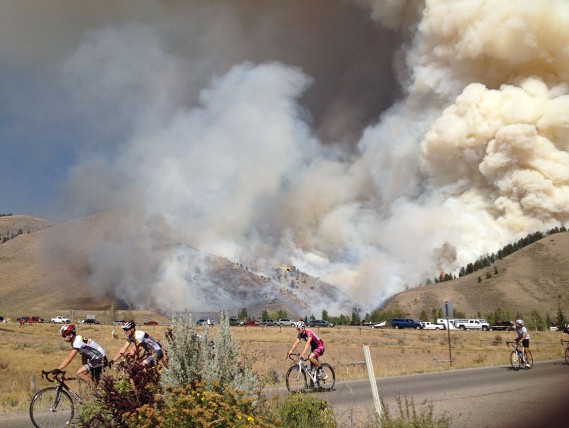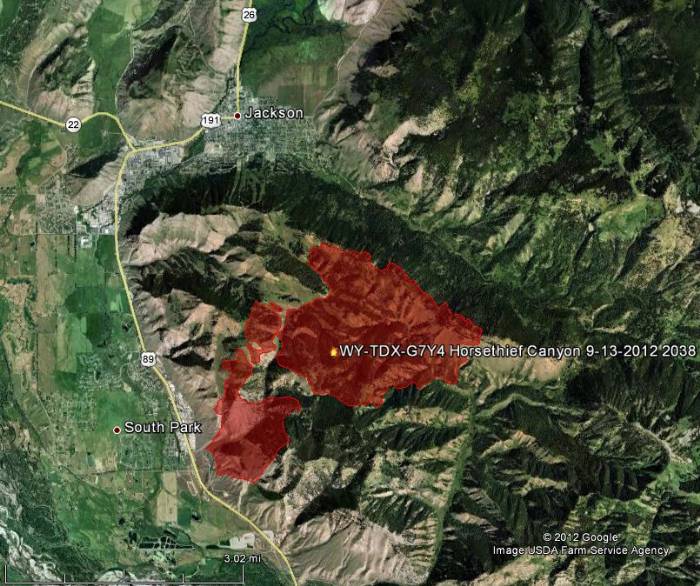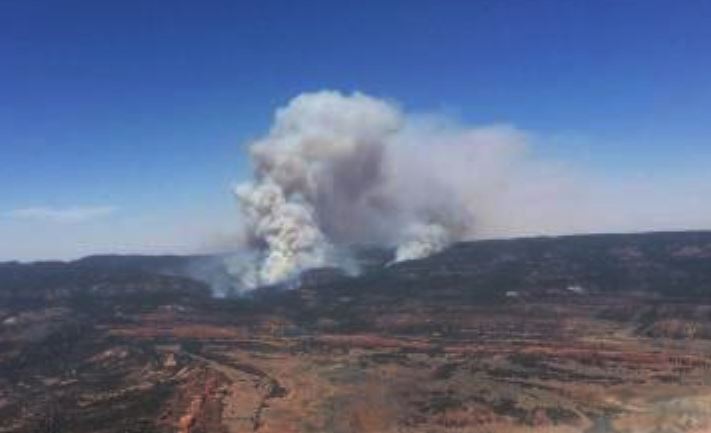
The Station Fire has burned approximately 16 homes and 9,000 acres just east of Casper, Wyoming in the community of Evansville. It started in a landfill on the north edge of town Saturday afternoon during a strong wind event, laid down overnight, but took off again Sunday afternoon. At 3:15 p.m. Monday, Wyoming State Forester Bill Crapster said the fire had been mapped at 7,000 Monday morning, but strong winds later in the day caused it to continue spreading and he estimated it had grown to about 9,000 acres.
Mr. Crapster said 536 homes are under evacuation orders affecting 1,350 residents. Two large air tankers assisted the ground-based firefighters. The MD-87 and BAe-146 were reloading at Rocky Mountain Metropolitan Airport (JeffCo) 219 miles southeast of the fire.
He confirmed the name of the fire is Station, in spite of media reports calling it the Cole Creek Fire.

Two helicopters are working the fire, a Type 1 and a Type 3, in addition to 50 to 60 engines, Mr. Crapster said.
While returning from a motorcycle trip to the national parks in northwest Wyoming Saturday evening, we happened to stop overnight in Evansville at a hotel 1.8 miles southeast of the burning landfill. As the sun was setting we watched the fire which was burning vigorously in the landfill and had spread a bit beyond it. Sunday morning as we left at 8 a.m. we did not notice any smoke there at all.
But the wind in the area Saturday night and Sunday morning was very, very strong, steady at 30 mph at least, with much stronger gusts. I was worried about the wind Saturday night blowing over my 600-pound bike in the hotel parking lot. When I checked in, the desk clerk noticed my attire, asked if I was on a motorcycle, and said that because of the wind I could park it near the front door … which I did. Thankfully it was still upright Sunday morning. As I departed the area on Interstate 25 heading east and then south there was an electronic sign over the Interstate warning of winds gusting to 55 mph, and said light trailers should not attempt travel. It was a battle on the motorcycle trying to stay in only one lane as I was rudely pushed around by the very, very strong wind.
The RAWS weather station at Fales Rock west of Casper recorded a wind gust Sunday morning of 61 mph with sustained winds above 30 mph between 8 a.m. and 2 p.m. By afternoon the relative humidity dropped to 10 percent.
At 3:10 p.m. on Monday the Fales Rock station showed 69 degrees, RH of 13 percent, and a southwest wind of 16 mph gusting to 27.
The weather forecast for the fire area calls for southwest winds decreasing Monday night to 17 mph with gusts to 24, an overnight RH of 42 percent and a low temperature of 44 degrees. Tuesday should bring 73 degrees, winds out of the southwest at 13 gusting around 20, and an RH of 14 percent.
UPDATE December 22, 2015: The Star Tribune has more information about how the fire started and how the initial attempts by landfill personnel to suppress the fire were not successful. The correct name of the fire is Station, not Cole Creek.
A fire that destroyed 14 homes in rural Evansville began after smoldering debris from a grinder at the Casper landfill ignited a woodchip pile at the facility, a state report concluded.
High winds the following day spread the embers to the surrounding prairie, sparking the Cole Creek Fire, which burned over 10,000 acres and temporarily displaced more than 1,000 people in October.
Landfill workers tried twice to extinguish the smoldering debris from the grinder, first with water extinguishers and later by stomping on them, according to the report, which was produced by the Wyoming Department of Fire Prevention and Electrical Safety.
The debris was pushed back into the woodchip pile after the second attempt by employees who believed the debris was no longer burning. However, the debris was still smoldering and ignited wood in the brush pile. Firefighters responded and kept watch overnight but lost control of the fire the following afternoon.
The report, which the Star-Tribune obtained Monday using a public records request, concludes the fire was an accident. The document does not address whether any workers at the landfill acted negligently….










